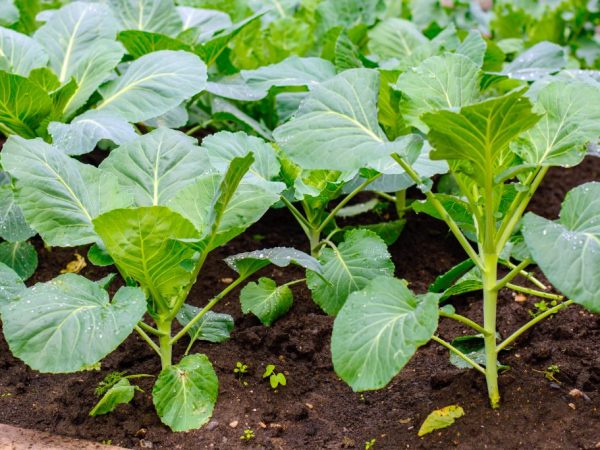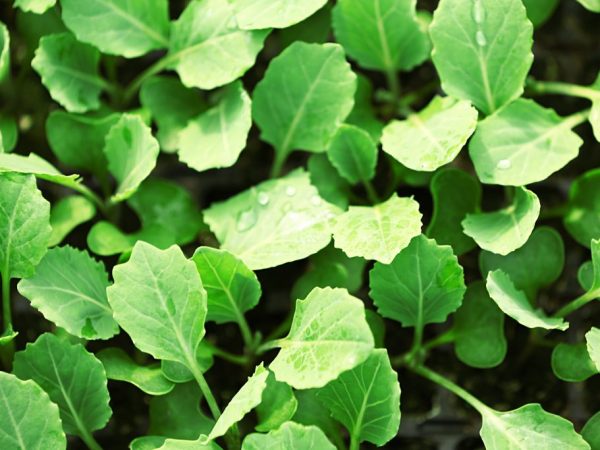Seedling cabbage and frozen
Freezing temperatures are one of the most unpleasant factors in weather conditions. In the middle lane, sharp cold snaps can occur both in the spring (when cabbage seedlings only fall into the ground) and in the fall (when it is time to harvest). Seedlings of cabbage and freezing are a topical issue for many gardeners.

Seedling cabbage and frozen
Freezing reasons
The frost threat to plants depends on several factors:
- climatic conditions at the time of cultivation;
- seedling condition;
- topographic location of the landing site.
External climatic conditions include abrupt changes in weather phenomena - an abnormal drop in temperature or high humidity in a cold wind.
The condition of the seedlings determines its health and the hardening carried out. A weakened and unhardened plant can die even from a slight cold snap.
Risk zone
The risk zone for freezing includes areas located in lowlands (especially if there are water bodies and swampy soils nearby). Plots that are well warmed by the sun's rays have a better chance of growing a crop.
It should be borne in mind that frost resistance depends on the variety of cabbage. Consider whether cauliflower is afraid of autumn frosts. Cauliflower is the most demanding in terms of temperature conditions. White-headed and broccoli are quite unpretentious, and Brussels sprouts are able to withstand up to -10 °.
Frost protection methods
The main ways to protect plants from spring and autumn frosts are:
- Smoke is the most ancient method, which consists in kindling fires at different points in the area. The resulting warm smoke screen softens the negative effect of lower temperatures on the seedlings. Smoke is carried out exclusively in calm weather, so that the smoke spreads close to the ground and retains a warm protective layer of air. They start lighting fires already at 0 °. Now this method is being abandoned everywhere, tk. it has been proven unsafe and not environmentally friendly.
- Sprinkling is one of the most common ways to protect plants from freezing. Sprinkling consists in evenly spraying the plantings with warm water through a fine spray. As the water freezes, the heat required for the seedlings will be released. This method is effective only in calm weather at temperatures down to -3-4 °. In strong wind conditions, sprinkling will only harm the plants. Before the onset of frost, you can water the soil so that the sun's rays heat the moist soil during daylight hours, and at night it gives off heat and forms a favorable microclimate for seedlings.
- Creation of a heat-insulating layer - covering the plants with newspapers, cardboard, cloth to keep warm. The more layers are created, the more reliably the seedlings will be protected from the cold. The covering material should not come into close contact with the sprouts; it is imperative to preserve the air gap.The insulating layer will make it possible to survive a drop in temperature (below 0 °) for up to a week.
- Foliar dressing with fertilizers containing potassium and phosphorus is an effective means of resisting cold (up to -5 °). To increase the winter hardiness of plants, fertilizers should be applied at least a day before the onset of a cold snap.
Frozen bushes must be hidden from bright sunlight, so as not to aggravate their condition. It is recommended to treat them with Epin or Zircon solutions to accelerate recovery.
Freezing prevention

Seedlings must be hardened
The value of hardening for sprouts is difficult to overestimate; it enhances frost resistance and strengthens the plant. Differences between seedlings after hardening and without it:
- Hardened seedlings - withstands spring and autumn frosts well. With proper hardening, seedlings can withstand a drop in temperature to -3-5 ° without loss.
- Unhardened seedlings are very demanding on the weather conditions in which they fell, they do not tolerate even a slight drop in temperature. Usually grows in greenhouses where there are no conditions for full hardening.
In difficult climatic conditions, weak and unhardened plants will die, and strong seedlings will get stronger and give productive ovaries. In the conditions of greenhouse growth, most of the sprouts have no chance of survival when the weather conditions deteriorate. Therefore, in a region with regular spring frosts, it is best to cultivate late planting varieties when temperature conditions become more favorable.
Hardening
Hardening of seedlings is one of the most important steps in plant care.
Delicate sprouts of cabbage require mandatory preparation for changes in temperature, which must be carried out even before planting in open ground.
The hardening process is usually carried out 8-10 days before planting and it is divided into the following stages:
- During the first days from the beginning of hardening, it is recommended to carry out a small flow of fresh air into the greenhouse or the room where the seedlings are located. The best option would be to open the window for 4-5 hours. During this time, fragile sprouts will begin to gently adapt to fluctuations in the temperature background.
- In the next 2-3 days, it is carried out outside the greenhouse (room) into fresh air. The ideal option would be to install containers of cabbage seedlings in the garden or veranda. It is important to remember that bright sunlight is harmful to delicate sprouts, therefore, the seedlings must be covered with a thin material that allows air to pass through. It is best to use gauze for this purpose.
- On the sixth to seventh day from the beginning of hardening, it is necessary to limit watering the plant so that the soil does not dry out. Seedlings should be outdoors all day, until they are planted in open ground.
Technological techniques
To ensure maximum safety in frost conditions, it is necessary to carry out the following preventive technological methods:
- Preparation of insulated beds. To create them, it is necessary to remove the top layer of soil, lay out rotted organic fertilizers, sprinkle with ammonium nitrate or urea and cover with removed earth. Fertilizers will begin to decompose and generate the necessary heat. But it is necessary to adhere to safety measures - the roots of the plants should not touch the fertilizers.
- Planting bushes in deep holes with complex fertilizers - used in the absence of insulated beds. Such holes create a good barrier from the wind and better retain moisture after watering, which contributes to high-quality protection of cabbage from frost.
- Abundant watering of all seedlings in anticipation of a drop in temperature. Watering is especially important for seedlings and seedlings.
Conclusion
Frozen cabbage seedlings tolerate quite well if timely preventive measures are taken - hardening, preparation of insulated beds (or planting in deep holes), abundant watering before a cold snap.
White, colored, Brussels sprouts and broccoli - all these varieties differ in their perception of low temperatures, from stable frost resistance (Brussels sprouts) to thermophilicity (colored). The response to frost of a particular plant depends on the specific characteristics of the variety, the state of the seedlings, climatic conditions and the topographic location of the crops.


